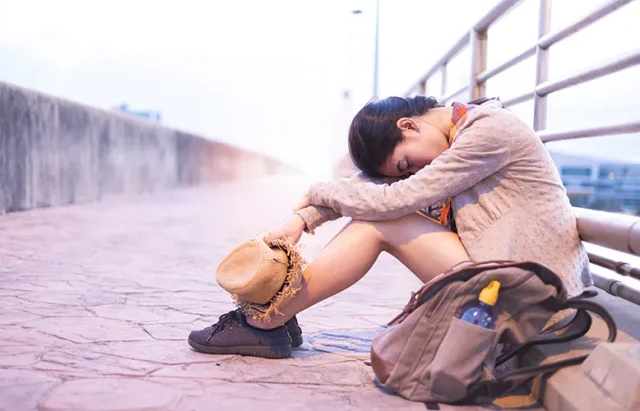
Traveling opens up a world of excitement—new sights, flavors, and stories that stick with you forever. But let’s be real: the thrill can sometimes come with bumps along the way. Whether you’re hiking Machu Picchu or strolling a bustling market in Bangkok, injuries happen more often than we’d like.
The good news? Most are totally preventable with a bit of know-how and smart habits. In this guide, we’ll dive into common travel injuries, share practical tips to sidestep them, and arm you with what to do if something does go sideways. By the end, you’ll feel confident hitting the road, knowing you’ve got safety covered. Let’s turn potential pitfalls into just another chapter in your epic travel tale.
Common Travel Injuries You Should Know About
Picture this: You’re finally on that dream vacation, and bam—a slip on a wet pool deck or a twisted ankle on uneven cobblestones. According to health experts, slips and falls top the list of travel mishaps, accounting for a big chunk of emergency room visits abroad. Then there’s traffic accidents, especially in places where roads twist like pretzels or drivers play fast and loose with rules.
Water-related woes, like drowning or jellyfish stings at the beach, sneak up on relaxed swimmers, while sports like snorkeling or skiing amp up the risk of sprains and strains.
Don’t forget the sneaky ones: deep vein thrombosis (DVT) from long flights, where blood clots form in your legs from sitting too still, or sunburn that turns your beach day into a red-hot regret. Heat stroke and dehydration hit hard in hot climates, zapping your energy and judgment.
And yeah, food poisoning might feel like an injury when it’s got you glued to the hotel bathroom. The silver lining? Awareness is your first line of defense. Spotting these patterns means you’re already steps ahead, ready to explore without the drama.
Preparing Your Body and Mind for Safe Travels
Getting ready for a trip isn’t just about packing your favorite swimsuit—it’s about tuning up your body like a well-oiled machine. Start with a check-up: Chat with your doctor about vaccinations, meds, and any chronic issues that could flare up. If you’re prone to motion sickness, stock up on ginger chews or bands—they’re game-changers for bumpy bus rides.
Build stamina with simple workouts: A few weeks of walking, yoga, or light cardio gets your muscles primed for hauling luggage or trekking trails. Mentally, pump yourself up with positive vibes—visualize smooth sales and quick fixes. Research your destination’s health scene: Know where clinics are and download translation apps for “I need a bandage” in local lingo.
If an injury disrupts your Indianapolis adventure, expert Indianapolis personal injury attorneys can help you seek fair compensation.
Smart Packing to Minimize Risks
Your suitcase is your secret weapon against travel oops moments, so pack like a pro. First, layer in versatile, comfy clothes: Breathable fabrics ward off overheating, and closed-toe shoes grip better than flip-flops on slick streets. Toss in a small first-aid kit—bandages, antiseptic wipes, pain relievers, tweezers for splinters, and any personal meds with extras for delays.
For sun protection, sunscreen (SPF 30+), a hat, and sunglasses aren’t optional; they’re your skin’s best buds against burns that could derail days two through fives. Compression socks? A must for flyers—they boost circulation and cut DVT odds. Add a reusable water bottle to stay hydrated on the go, and insect repellent for those buggy evenings.
Don’t overload your bag—back strains from heavy loads are no joke. Use packing cubes to keep things light and organized, and slip in a portable charger so your phone’s always ready for mapping safe routes. This isn’t clutter; it’s your toolkit for turning “what if” worries into “I’ve got this” confidence, keeping the focus on fun.
Staying Safe on the Road and in the Air
Transportations where many injuries hitch a ride, but you can steer clear with savvy moves. In the air, combat DVT by standing and stretching every hour—thin calf raises or ankle circles. Drink water like it’s your job, skip booze and caffeine that dehydrate you faster than a desert wind. Buckle up always; turbulence is no myth.
On roads abroad, where seatbelts might be optional luxuries, insist on them and choose licensed taxis over sketchy ride-shares. For scooters or rentals, helmets are non-negotiable—head knocks from low-speed spills add up quick. Drive defensively: Scan for erratic locals, obey speeds, and pull over if fatigue creeps in.
Buses and trains? Scope seats near exits for quick escapes, and keep valuables close to deter pickpockets that could lead to chases (and falls). Apps like Google Maps with offline mode help plot safer paths.
Navigating Destinations Without Mishaps
Once you’re there, the real adventure unfolds—but so do the risks if you’re not clued in. Uneven sidewalks in historic spots scream “watch your step,” so trade sandals for supportive sneakers and scan ahead like a hawk. At beaches, swim where lifeguards patrol; rip currents love pulling in the unwary, but floating on your back until help arrives saves lives.
For hikes or tours, stick to marked paths—cliffs and roots love surprising ankles. Buddy up for night walks in lively areas, varying your route to shake off tails, and skip flashy jewelry that shouts, “rob me.” Hydrate proactively in heat; electrolyte packets in your day pack beat heat exhaustion every time.
Handling Injuries When They Happen
Even the best-laid plans hit snags, but quick thinking turns “oh no” into “no big deal.” For minor cuts or sprains, RICE it: Rest, Ice (grab a cold pack from a café), compress with a wrap, elevate above heart level. Clean wounds pronto to fend off infections, and pop an ibuprofen for swelling.
Bigger issues like fractures or bites? Head to a clinic—your travel insurance card in hand speeds things up. Download the Red Cross app for first-aid refreshers; it covers everything from choking to allergic reactions.
Stay calm; panic amps pain. Breathe deep, assess: Is it getting worse? Evacuate if needed via insured medieval. Most spots have solid care—think pharmacies stocking basics everywhere. You’ve prepped, so trust your gut. Handling hiccups like a champ means your trip’s highlight reel stays golden, not glitchy.
Learning and Thriving: Post-Travel Recovery
Back home, the journey’s not over—it’s evolution time. Unpack those aches: Journal what went well and what you’d tweak, turning scrapes into smarter future you. Rest up; jet lag plus injuries crave sleep and nourishing eats—think anti-inflammatory berries and greens to heal from within.
Follow doc orders: Physical therapy for that tweaked knee builds stronger strides ahead. Share your tales with friends—not just the glamour shots, but the gritty bits that grew you. It inspires safer packs for their trips, too.





